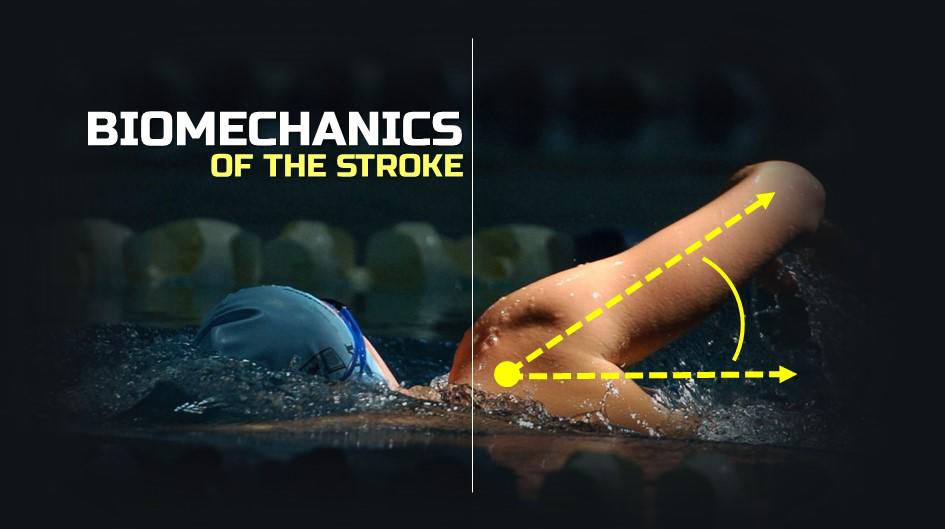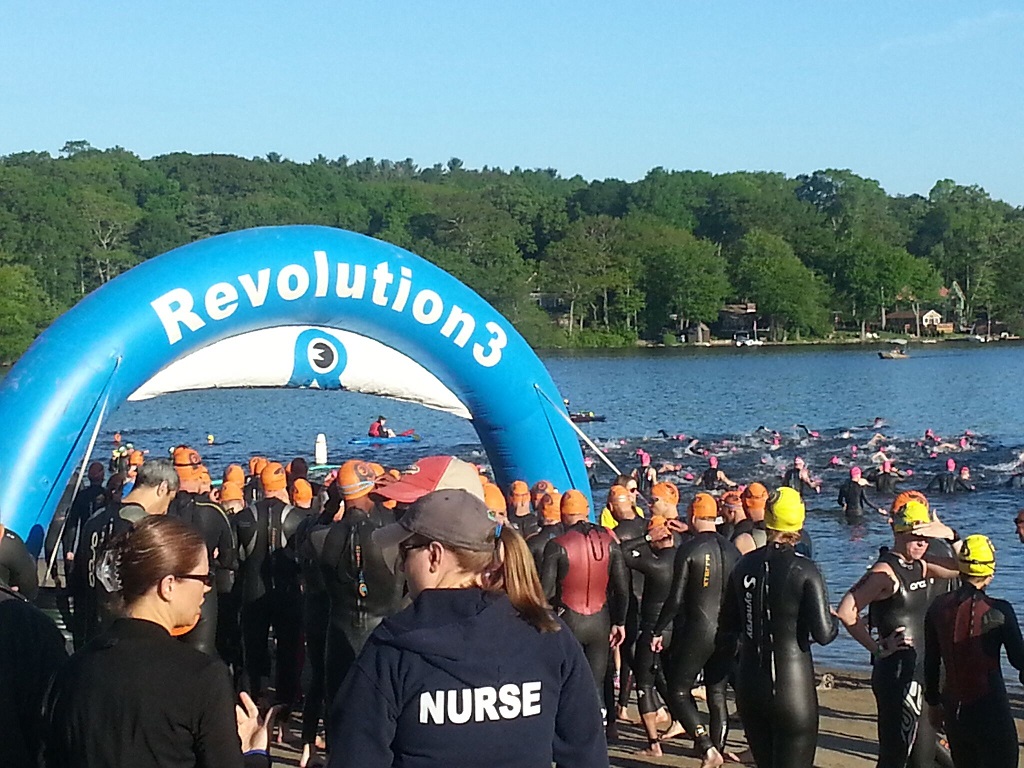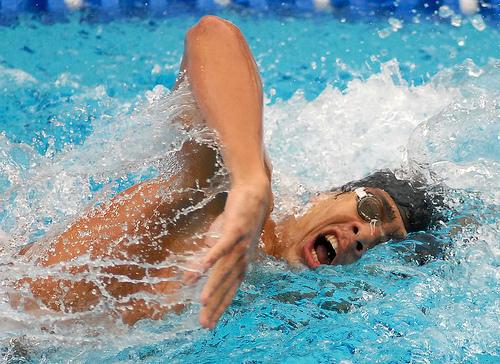Written By Keri Ouellette, TriSports.com Elite Team Athlete
Unlike running and cycling, simply increasing your turnover in swimming will not necessarily make you go faster. This may seem counter-intuitive to triathletes who are new to swimming, especially those coming from a running or cycling background where moving your legs faster generally results in a faster finish time. I’ve had several triathletes ask me, “I’m swimming several times a week and working on drills and doing recommended swim workouts– why am I not getting any faster?” Here are some things that may be holding back your swimming progress and what you can do to improve.
You’re not aware of your form and body positioning
Most triathletes know that good form is essential to improve in swimming; however, the techniques learned from reading articles, watching videos, and talking to coaches does not always translate to faster swimming in the pool. Reducing drag by adjusting your body position to be more streamlined is the easiest way to swim faster. Think of your body on an axis, from the top of your head down the center of your body and between your feet. Your body should be rotating on this axis while minimizing lateral movement to reduce drag, like a rotisserie chicken. This sounds easy, but often what our bodies are doing in the water is not exactly what we think they’re doing. Hours spent doing swimming drills are often wasted if you’re practicing incorrect form.
Video analysis is helpful in understanding exactly how your body is moving through the water. Have a friend take a video of your swimming, from the front, side, and underwater (if possible), and review it in slow motion. Focus on one or two adjustments each time you go to the pool. Do another video analysis two to three weeks later and see how you’ve improved and what you still need to work on.
You’re not breathing correctly
Breathing while swimming is unnatural, and it’s common to feel short of breath even during easy swimming if you’re not used to breathing in the water. This is a big obstacle to feeling comfortable during the swim and can waste a lot of energy. Exhaling fully while your face is in the water is necessary so that you’re ready to inhale when you turn your head to breathe. If you hold your breath underwater, you will be trying to exhale and inhale each time you take a breath, resulting in shallow, inefficient breathing.
Simple exercises like bobs, can help you adjust. Standing in the shallow end of the pool, lower your body until your head is underwater, exhaling slowly. Raise your head up above the water, just long enough to inhale quickly but fully, then lower again, exhaling slowly. Once you get used to exhaling underwater, you can practice breathing while swimming.
Find a breathing pattern that is comfortable for you to sustain for the duration of a race, making sure that you’re getting enough oxygen. Some open water swimmers prefer bilateral breathing which can help you to swim in a straight line and keep your body balanced. If breathing every three strokes leaves you feeling out of breath, try taking two breaths on one side, three strokes, and then two on the other side. If you feel out of breath, try breathing more frequently (every stroke, if needed) or slowing down your stroke until your breathing feels more relaxed.
Learning to control your breathing will allow you to swim more efficiently and swim faster without getting out of breath as quickly. This is critical for triathletes who have a bike and run to follow. Slow, controlled breathing is also a useful skill during the swim start of a triathlon. The chaos of the swim start can cause your heart to race. Focusing on breathing can help to keep you calm and not waste energy.

You’re not pulling hard enough
Once you’re breathing comfortably and your form is looking good, what’s next? A common mistake for new swimmers is to maintain the same arm speed throughout the cycle of the stroke from entry, through the underwater pull and recovery. By increasing the speed of your stroke– actually pushing harder –from when your hand is just below your torso through the completion of the stroke, when your hand reaches your hip. This will allow you to take advantage of the larger lat and chest muscles used during the pull phase. Think of this phase of the pull as pushing your body past your hand by engaging the larger muscles of your upper body, not just a rotation of the arm and shoulder.
If you’re not used to engaging these muscles, building strength through pulling drills and land-based strength training can help increase the power of your swimming stroke. Using paddles can help improve strength by forcing you to pull more water than without them. Make sure your form is correct before doing heavy training with paddles, to avoid shoulder injury or reinforcing poor form. Stretch Cordz are an effective land-based strength training tool for swimming and a great way to supplement your swim training when you don’t have time to get to the pool. Stretch Cordz are used to mimic the underwater pull movement, isolating the exact muscles used while swimming.
There are so many factors of swim technique that it can get overwhelming to try to remember all of them while you’re swimming. Even experienced swimmers do drills and continue to make adjustments to their form to improve efficiency. The more you practice these techniques, the more natural they will feel and the faster you’ll be swimming!
